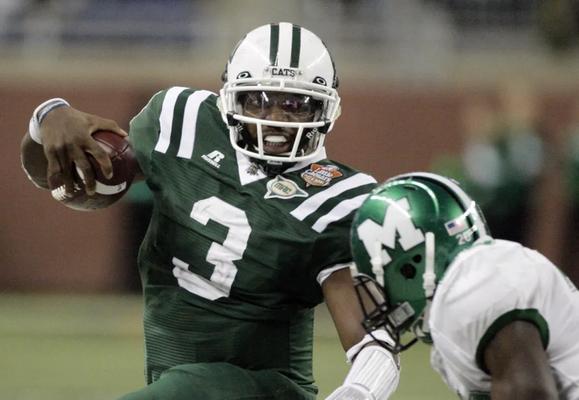•
Written By
Written By
•
•
•
Loading article...
Written By
Written By
The West Coast Conference has long been a close-knit union of Western Catholic institutions, but is a little open-mindedness necessary for the future?
Written By
Omar-Rashon Borja
Senior Writer, Editor, Historian
Written By
Omar-Rashon Borja
Senior Writer, Editor, Historian

The West Coast Conference (WCC) has a type. They always have: private, religious, mainly Catholic institutions. Washington State and Oregon State's affiliate membership across 12 sports this year is the closest the conference has come to having a public institution as a full member since Nevada left in 1979.
The affinity for Catholic institutions has protected the league from turnaround. The conference has had 16 different full members throughout its 73-year existence. That's it. For reference, Conference USA has had more than double that number in 43 fewer years. However, this sense of exclusivity could currently hurt the conference.
Next year, the most recognizable program in the league, Gonzaga, leaves for the PAC-12. The Bulldogs need no introduction to casual men’s college basketball fans, but their women’s team is just as dominant, attending 15 NCAA Tournaments since 2007.
The Bulldogs’ exit leaves the West Coast Conference at nine members for now but severely depletes its media value. It also opens the door for their fellow men’s basketball power broker, St. Mary’s, to follow suit. The rebuilt PAC-12 desperately needs members. For the Gaels, following Gonzaga is following the money.
A potential exit by St. Mary’s creates a tenuous situation for the West Coast Conference, leaving it with eight members. Conference commissioners must be forward-thinking in this age of constant turnover among leagues. One has to wonder, is the West Coast Conference prepared for the future?
The crumbling Western Athletic Conference has two members, Southern Utah and Utah Tech needing a home. Both are public institutions, yet provide insurance for the West Coast Conference. Despite football leading to their demise, the PAC-12 and Western Athletic Conference provide cautionary tales for the WCC.
Southern Utah and Utah Tech both offer some access to the prized Las Vegas market. Both schools are less than three hours away from the city. The duo would also put the WCC back in Utah after BYU left for the Big 12, albeit on a different side of the state. The two also would put the West Coast Conference back in the Mountain Time Zone. Although a small benefit, it could give the conference more flexibility with tip-off times for televised games, opening the door for more 8 PM ET tips beneficial for coveted East Coast and Central time zone viewers.
The West Coast Conference would have enough leverage against the Beehive State pair to keep its current members happy. Conditions such as a reduced media share or travel subsidies could accompany Utah Tech and Southern Utah's entry.
More importantly, they give the West Coast Conference depth, putting them at 11 members after Gonzaga leaves. The war for college sports in the West will likely continue long after the PAC-12 and Mountain West finish mediation. The West Coast Conference has schools in markets neither the Mountain West nor PAC-12 reside in, such as Portland and San Diego. Either school could become a target for the power-hungry leagues. The West Coast Conference cannot afford to wait, especially with two schools in their footprint that need a conference. They are two schools away from an existential crisis.
Times are so tense in college athletics that even the West Coast Conference's public school equivalent, the Big West, is widening its perspective. The Big West added its first private institution since 2013, when it added Cal Baptist. The Big West even left its California comfort zone to invite an emerging Utah Valley program with three regular season WAC men's basketball titles and two NIT appearances since 2021. The Big West knew they must adapt or possibly die. Times are changing. The quicker the WCC realizes it, the more likely it survives.
The West Coast Conference is safe for now. They have a clear niche on the Division I landscape for private religious institutions in the West. However, their stagnancy and lack of open-mindedness could land them in the same position as the WAC and PAC-12. Change is scary, especially for an over-70-year-old league. Nonetheless, it may be necessary for survival.


